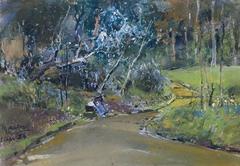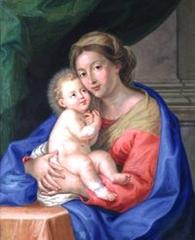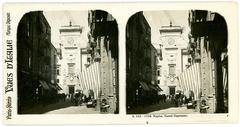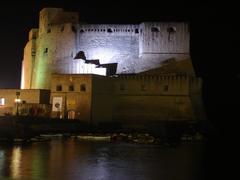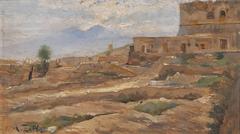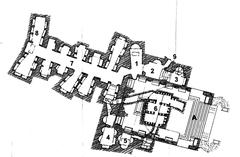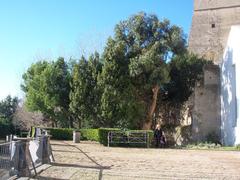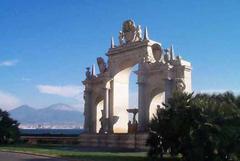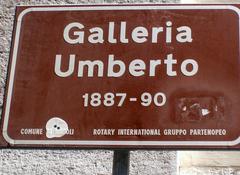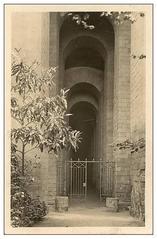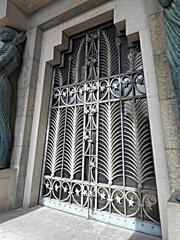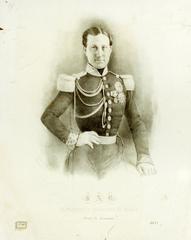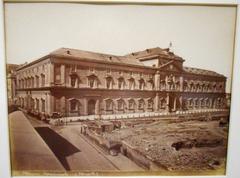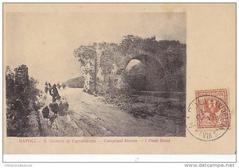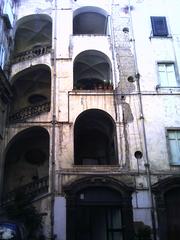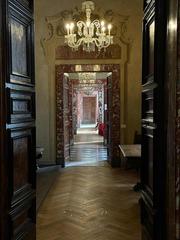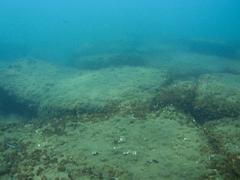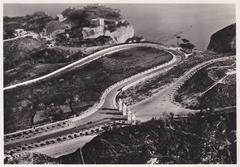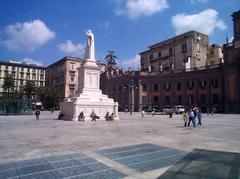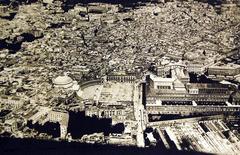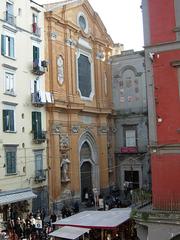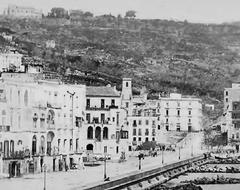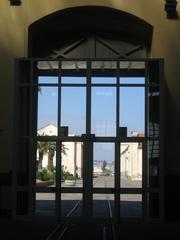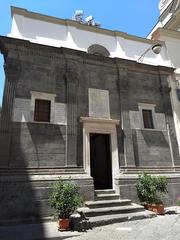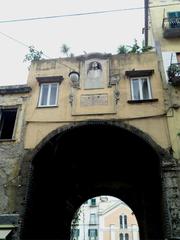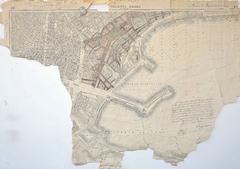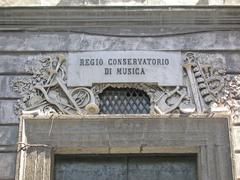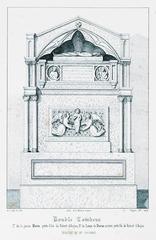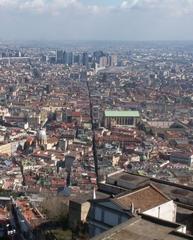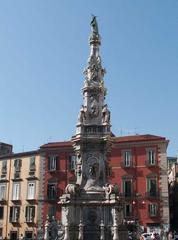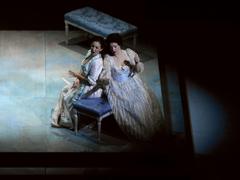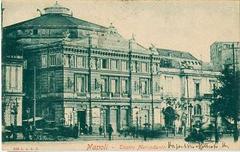
Santa Maria Donna Regina Vecchia: Visiting Hours, Tickets, and Historical Significance in Naples
Date: 04/07/2025
Introduction
Santa Maria Donna Regina Vecchia is a landmark of medieval Gothic architecture and religious heritage located in the heart of Naples, Italy. Founded as early as 780 CE, the church’s history weaves together layers of Byzantine, Benedictine, Franciscan, and Clarissan influences. Its early 14th-century Gothic reconstruction—spearheaded by Queen Maria of Hungary, wife of Charles II of Anjou—cemented its architectural splendor and enduring spiritual significance. Today, Santa Maria Donna Regina Vecchia, together with its Baroque neighbor, Santa Maria Donna Regina Nuova, forms part of the Diocesan Museum of Naples, which preserves an extraordinary collection of sacred art and offers a rich cultural experience for visitors.
This guide provides detailed information on visiting hours, ticketing, accessibility, guided tours, and practical tips for your visit. It also explores the church’s historical, architectural, and artistic importance, and suggests nearby attractions to help you make the most of your trip to Naples. For the most current details and to plan your visit, please consult official sources (cbnapoli.it, Museo Diocesano Napoli, Donight.it).
Table of Contents
- Introduction
- Historical Overview
- Architectural and Artistic Significance
- Diocesan Museum of Naples: Collection and Visitor Experience
- Practical Visitor Information
- Frequently Asked Questions (FAQ)
- Summary and Plan Your Visit
- References
Historical Overview
Early Origins and Foundation
Santa Maria Donna Regina Vecchia’s roots reach back to at least 780 CE, when it was established as a convent for Greek-Italian nuns, reflecting early Byzantine influence (cbnapoli.it). By the 9th century, the site hosted Benedictine nuns, then later Franciscan and Clarissan communities, underscoring its resilience and spiritual importance in Naples’ evolving religious landscape.
Angevins and Gothic Transformation
The destructive earthquake of 1293 prompted Queen Maria of Hungary to oversee the church’s Gothic-style reconstruction, completed in the early 14th century. Her patronage is immortalized in the church’s architecture and her own monumental tomb within, linking the site to the Angevin dynasty and the royal women who shaped its destiny.
Disasters and Restoration
A fire in 1390, caused by lightning, damaged the church’s roof and frescoes. Nevertheless, thanks to subsequent restoration efforts, the core structure and remarkable cycle of frescoes survived, preserving the church’s medieval character—distinct among Neapolitan churches, many of which were later remodeled in the Baroque style.
The Dual Churches: Medieval and Baroque
In the 17th century, the Clarissan nuns expanded the complex by constructing the adjacent Baroque church, Santa Maria Donna Regina Nuova, rather than altering the Gothic structure. The two churches are linked by a cloistered corridor, creating a unique juxtaposition of architectural styles and illustrating the city’s religious and artistic evolution.
Monastic Life and Preservation
For over a millennium, the convent was a center of female spiritual life and agency, with royal patronage enhancing its prestige. Today, as part of the Monumental Complex of Donnaregina, it is an active site for exhibitions, cultural events, and guided tours, safeguarding Naples’ medieval heritage.
Architectural and Artistic Significance
Layout and Structure
The church is a prime example of early 14th-century Gothic architecture in Naples. Designed as a single elongated nave with a polygonal apse, the structure reflects the needs of the Clarissan order: spiritual focus and monastic privacy. The austere façade features two single-light windows, an oculus, and the coat of arms of Queen Maria of Hungary (Wikipedia), while the small 18th-century “Chiostro dei Marmi” cloister adds a classical touch.
Gothic Features
Inside, you’ll find pointed arches, high ribbed vaults, and slender columns typical of Angevin Gothic style. The apse’s polychrome rib decorations symbolize the Angevin and Hungarian dynasties, while the nave’s wooden truss roof and Renaissance coffered ceiling create a layered visual experience.
Fresco Cycles
Among the church’s greatest treasures is its 14th-century fresco cycle, especially those in the nuns’ choir and apse. Attributed to artists influenced by the Sienese and Roman schools (possibly Pietro Cavallini), these frescoes depict scenes from the lives of Christ, the Virgin Mary, and key saints, representing an important milestone in the transition from medieval to early Renaissance art.
Tomb of Queen Maria of Hungary
The monumental Gothic tomb of Queen Maria of Hungary, sculpted by Tino di Camaino in 1326, stands as a masterpiece of funerary art. Featuring the queen’s effigy dressed as a Poor Clare, the tomb’s intricate carvings and angels underscore her devotion and the royal family’s influence on the church (Donight.it).
Diocesan Museum of Naples: Collection and Visitor Experience
Santa Maria Donna Regina Vecchia, together with the Baroque Santa Maria Donna Regina Nuova, forms the heart of the Diocesan Museum of Naples. The museum displays over 300 works of sacred art—paintings, sculptures, and liturgical objects—from the Middle Ages through the Baroque era (Museo Diocesano Napoli).
Museum Highlights
- Artists: Works by Luca Giordano, Aniello Falcone, Francesco Solimena, Andrea Vaccaro, Mattia Preti, and others.
- Treasures: The Stauroteca di San Leonzio, a 12th-century gold reliquary cross, is one of southern Italy’s most precious liturgical artifacts.
- Thematic Rooms: Exhibits cover the Passion of Christ, consecrated life, works of mercy, martyrdom, and sacraments.
- Architectural Integration: Visitors can experience both Gothic and Baroque spaces, witnessing the evolution of Neapolitan religious art and architecture.
Practical Visitor Information
Visiting Hours
- Santa Maria Donna Regina Vecchia is open Tuesday to Sunday, 9:00 AM to 7:00 PM (last entry at 6:30 PM). Closed on Mondays and public holidays.
- Museum Opening Hours: Typically 9:30 AM to 4:30 PM; check official website for updates.
Tickets and Admission
- General Admission: €8
- Reduced Tickets: €5 for EU citizens aged 18-25
- Free Entry: Children under 18, Naples residents, teachers, journalists, and certain other categories
- Museum Admission: Standard €6; discounts and combined tickets may be available
- Purchase: Online via the official site or at the entrance
Accessibility
The Baroque church and main exhibition areas are wheelchair accessible; some medieval sections have limited access due to historic architecture. Contact the museum in advance for assistance or more details.
Guided Tours and Events
- Guided Tours: Available in multiple languages (English, Italian, Spanish) by reservation; audio guides can be rented or downloaded via the official app.
- Events: Temporary exhibitions, concerts, and cultural events are frequently hosted—check the museum’s website for details.
Travel Tips & Getting There
- Address: Largo Donnaregina, 80138 Naples, Italy
- Metro: Line 1 (Museo station) or Line 2 (Cavour), then a short walk
- Bus: Several lines serve Via Duomo
- Nearby Attractions: Naples Cathedral (Duomo di Napoli), Museo Tesoro di San Gennaro, Via dei Tribunali, Santa Chiara Monastery
Frequently Asked Questions (FAQ)
Q: What are the visiting hours?
A: Tuesday to Sunday, 9:00 AM to 7:00 PM (last entry 6:30 PM); closed Mondays and public holidays.
Q: How much are tickets?
A: General admission is €8; reduced rates for certain groups; children under 18 and specific categories enter free.
Q: Are guided tours available?
A: Yes, in multiple languages. Audio guides are also available.
Q: Is the site wheelchair accessible?
A: Most main areas are accessible, but some medieval sections may be challenging.
Q: Can I take photographs?
A: Non-flash photography is permitted; tripods and professional equipment require prior authorization.
Q: How do I get there?
A: The complex is centrally located, walkable from Naples Cathedral, and easily reached by metro or bus.
Summary and Plan Your Visit
Santa Maria Donna Regina Vecchia is a jewel of Naples’ medieval and artistic landscape, offering a rare glimpse into the city’s Gothic past and the royal patronage that shaped its destiny. The preserved architecture, exceptional frescoes, and the grand tomb of Queen Maria of Hungary provide visitors with a profound cultural and spiritual experience. As part of the Diocesan Museum of Naples, the church connects visitors to centuries of sacred art and history, while its central location makes it an essential stop on any Naples itinerary.
To enhance your visit:
- Download the Audiala app for audio guides and interactive maps.
- Check official websites and Museo Diocesano Napoli for up-to-date information.
- Explore related sites nearby and enrich your understanding of Naples’ extraordinary heritage.
Plan your visit today and experience the enduring beauty and history of Santa Maria Donna Regina Vecchia!
References
- Santa Maria Donna Regina Vecchia in Naples: Visiting Hours, Tickets, and Historical Insights (cbnapoli.it)
- Santa Maria Donnaregina Vecchia: Visiting Hours, Tickets, and Architectural Highlights in Naples (Wikipedia)
- Diocesan Museum of Naples Visiting Hours, Tickets & Historical Sites Guide (Donight.it)
- Diocesan Museum of Naples Visiting Hours, Tickets & Historical Sites Guide (Napoliving.it)
- Visiting Santa Maria Donna Regina Vecchia: History, Tickets, and Travel Tips in Naples (Museo Diocesano Napoli)

